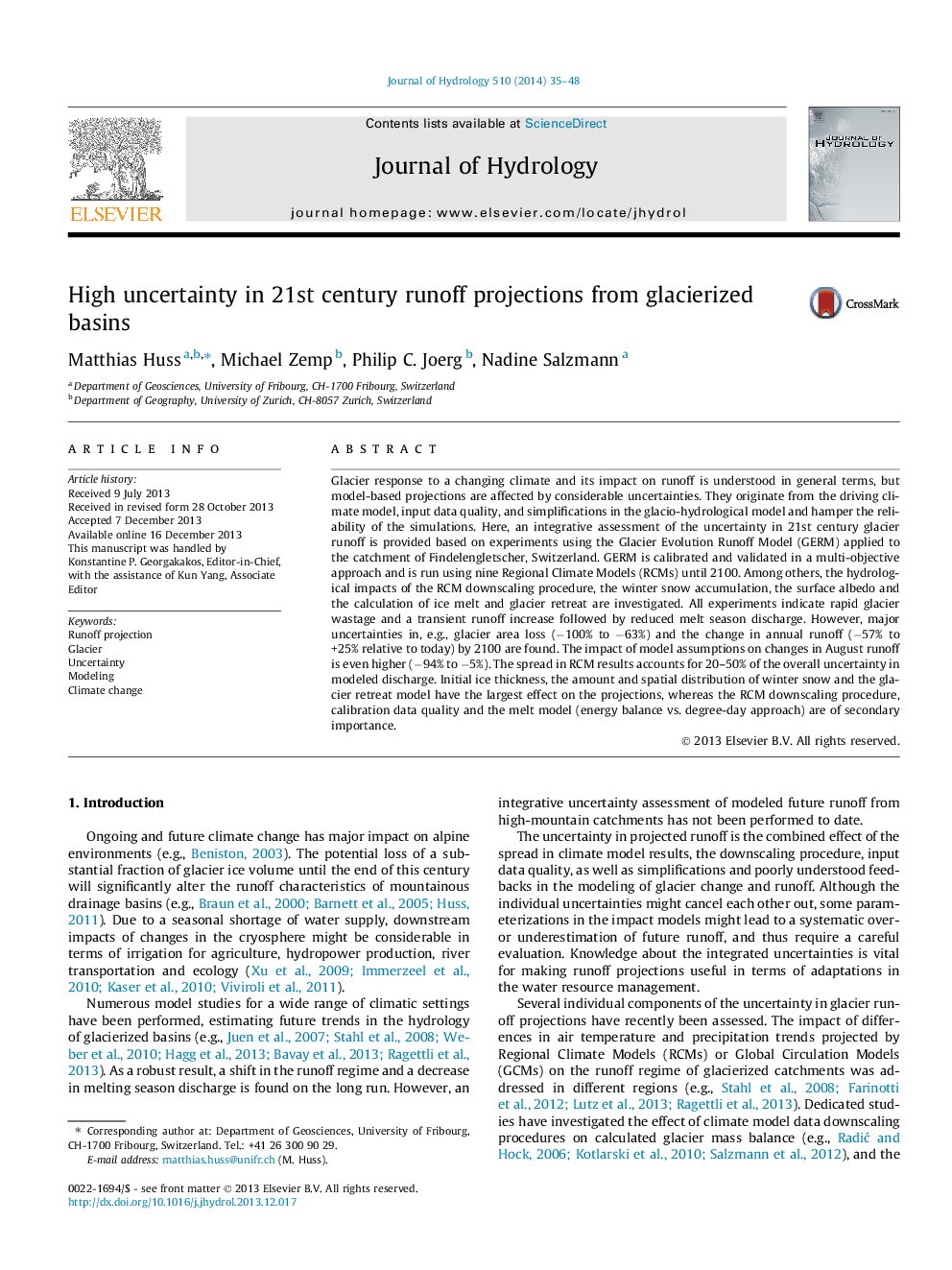| کد مقاله | کد نشریه | سال انتشار | مقاله انگلیسی | نسخه تمام متن |
|---|---|---|---|---|
| 6413170 | 1629938 | 2014 | 14 صفحه PDF | دانلود رایگان |
- Comprehensive modeling study of future changes in hydrology of a glacierized basin.
- Runoff uncertainties due to various factors are investigated individually.
- Strong impact of climate models and input data (ice volume, snow) on modeled runoff.
- High uncertainties in projected glacier runoff; results disagree on increase/decrease.
- Hydrological model improvements needed for advances in water resource management.
Glacier response to a changing climate and its impact on runoff is understood in general terms, but model-based projections are affected by considerable uncertainties. They originate from the driving climate model, input data quality, and simplifications in the glacio-hydrological model and hamper the reliability of the simulations. Here, an integrative assessment of the uncertainty in 21st century glacier runoff is provided based on experiments using the Glacier Evolution Runoff Model (GERM) applied to the catchment of Findelengletscher, Switzerland. GERM is calibrated and validated in a multi-objective approach and is run using nine Regional Climate Models (RCMs) until 2100. Among others, the hydrological impacts of the RCM downscaling procedure, the winter snow accumulation, the surface albedo and the calculation of ice melt and glacier retreat are investigated. All experiments indicate rapid glacier wastage and a transient runoff increase followed by reduced melt season discharge. However, major uncertainties in, e.g., glacier area loss (â100% to â63%) and the change in annual runoff (â57% to +25% relative to today) by 2100 are found. The impact of model assumptions on changes in August runoff is even higher (â94% to â5%). The spread in RCM results accounts for 20-50% of the overall uncertainty in modeled discharge. Initial ice thickness, the amount and spatial distribution of winter snow and the glacier retreat model have the largest effect on the projections, whereas the RCM downscaling procedure, calibration data quality and the melt model (energy balance vs. degree-day approach) are of secondary importance.
Journal: Journal of Hydrology - Volume 510, 14 March 2014, Pages 35-48
